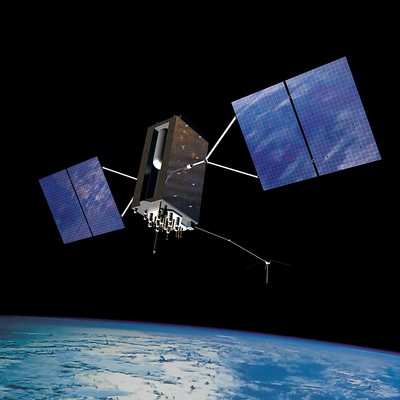Mon, May 11, 2009
New Satellites May Not Keep Up With Needs
 It's not exactly a
page-turner but a recently issued GAO report ANN is reading has us
a mite concerned... according to some of the data published
therein, the GAO found that, "It is uncertain whether the Air Force
will be able to acquire new satellites in time to maintain current
GPS service without interruption. If not, some military operations
and some civilian users could be adversely affected."
It's not exactly a
page-turner but a recently issued GAO report ANN is reading has us
a mite concerned... according to some of the data published
therein, the GAO found that, "It is uncertain whether the Air Force
will be able to acquire new satellites in time to maintain current
GPS service without interruption. If not, some military operations
and some civilian users could be adversely affected."
The GAO preface states that, "In recent years, the Air Force has
struggled to successfully build GPS satellites within cost and
schedule goals; it encountered significant technical problems that
still threaten its delivery schedule; and it struggled with a
different contractor. As a result, the current IIF satellite
program has overrun its original cost estimate by about $870
million and the launch of its first satellite has been delayed to
November 2009—almost 3 years late.
Additional GAO Considerations:
- ...while the Air Force is structuring the new GPS IIIA program
to prevent mistakes made on the IIF program, the Air Force is
aiming to deploy the next generation of GPS satellites 3 years
faster than the IIF satellites. GAO’s analysis found that
this schedule is optimistic, given the program’s late start,
past trends in space acquisitions, and challenges facing the new
contractor. Of particular concern is leadership for GPS
acquisition, as GAO and other studies have found the lack of a
single point of authority for space programs and frequent turnover
in program managers have hampered requirements setting, funding
stability, and resource allocation.

- If the Air Force does not meet its schedule goals for
development of GPS IIIA satellites, there will be an increased
likelihood that in 2010, as old satellites begin to fail, the
overall GPS constellation will fall below the number of satellites
required to provide the level of GPS service that the U.S.
government commits to. Such a gap in capability could have
wide-ranging impacts on all GPS users, though there are measures
the Air Force and others can take to plan for and minimize these
impacts.
The GA Report makes a recommendation that the Secretary of
Defense appoint a single authority to oversee development of GPS
space, ground control, and user equipment assets, to ensure they
are synchronized, well executed, and potential disruptions are
minimized. DOD reportedly concurred with GAO's
recommendations.
More News
Terminal Radar Service Area Airspace surrounding designated airports wherein ATC provides radar vectoring, sequencing, and separation on a full-time basis for all IFR and participa>[...]
Very High Frequency (VHF) The frequency band between 30 and 300 MHz. Portions of this band, 108 to 118 MHz, are used for certain NAVAIDs; 118 to 136 MHz are used for civil air/grou>[...]
“From approximately November 2021 through January 2022, Britton-Harr, acting on behalf of AeroVanti, entered into lease-purchase agreements for five Piaggio-manufactured airc>[...]
Also: Virtual FLRAA Prototype, IFR-Capable Autonomous A/C, NS-32 Crew, Golden Dome Missile Defense Bombardier announced that the first production Global 8000 successfully completed>[...]
Aero Linx: The 1-26 Association (Schweizer) The Association’s goal is to foster the helpfulness, the camaraderie, and the opportunity for head-to-head competition that is fou>[...]
 ANN's Daily Aero-Term (05.29.25): Terminal Radar Service Area
ANN's Daily Aero-Term (05.29.25): Terminal Radar Service Area ANN's Daily Aero-Term (05.30.25): Very High Frequency (VHF)
ANN's Daily Aero-Term (05.30.25): Very High Frequency (VHF) Aero-News: Quote of the Day (05.30.25)
Aero-News: Quote of the Day (05.30.25) Airborne 05.23.25: Global 8000, Qatar B747 Accepted, Aviation Merit Badge
Airborne 05.23.25: Global 8000, Qatar B747 Accepted, Aviation Merit Badge ANN's Daily Aero-Linx (05.30.25)
ANN's Daily Aero-Linx (05.30.25)




